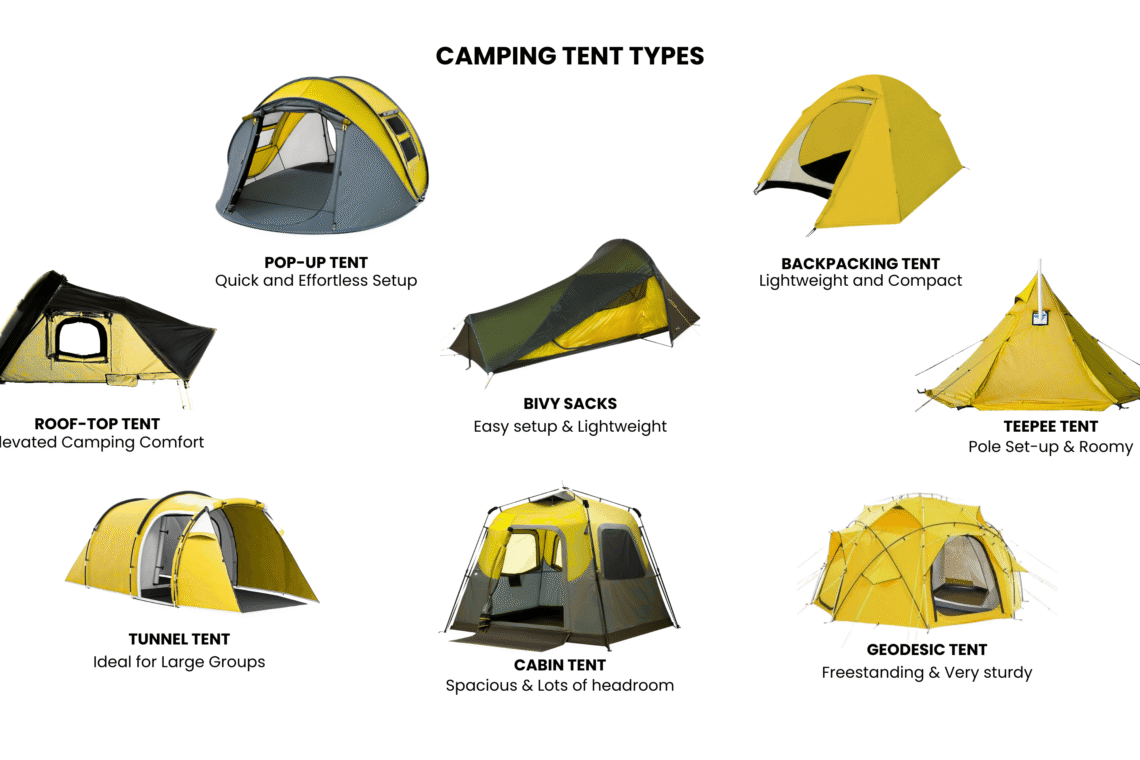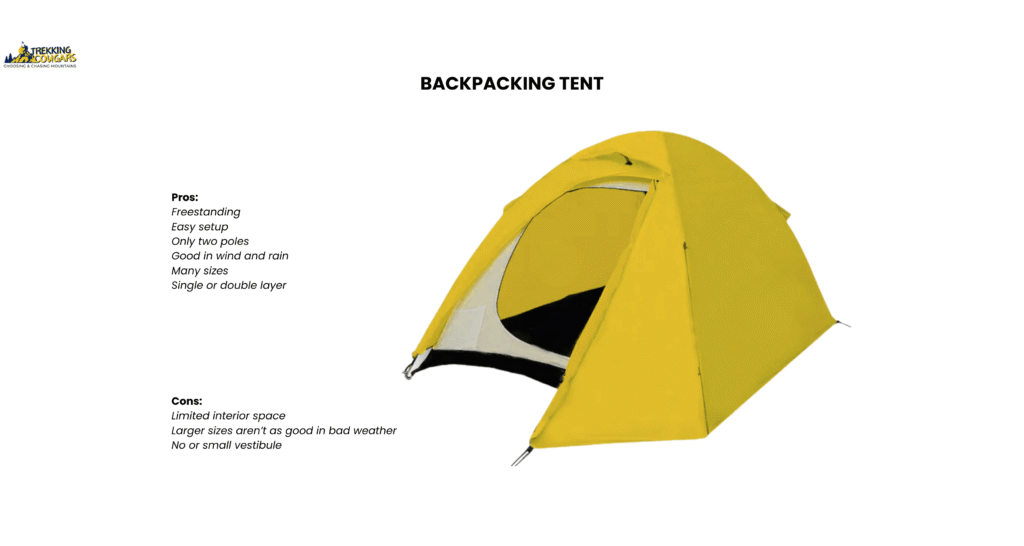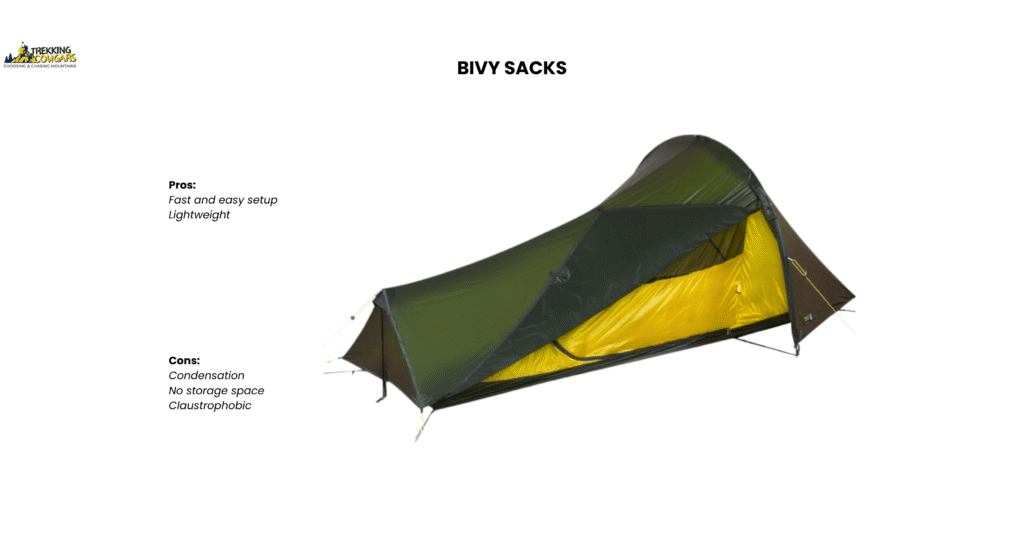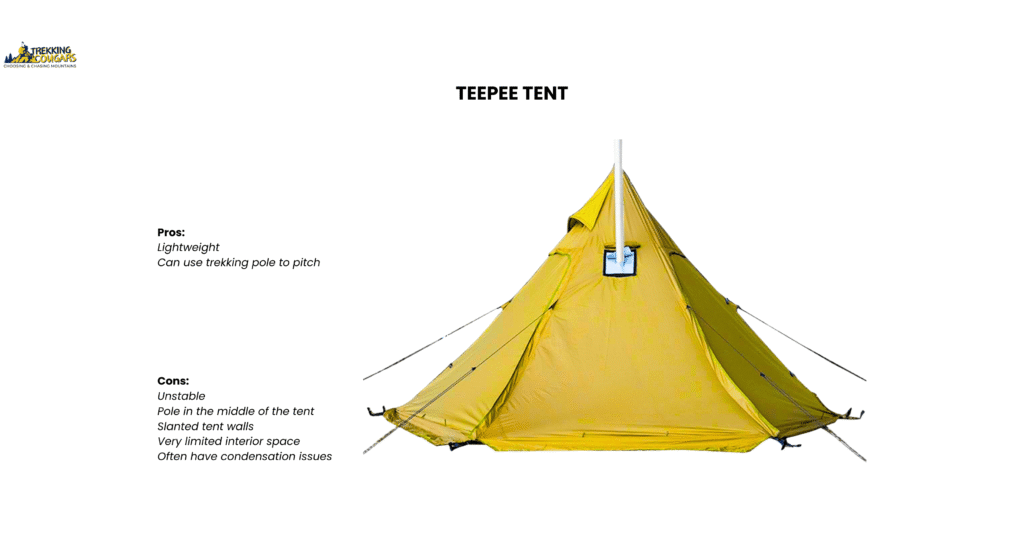How Difficult is the Gaumukh Tapovan Trek?
- November 1, 2025
- Blog
The Gaumukh Tapovan trek is one of the most breathtaking journeys in the Himalayas. Here, the mountains don’t just stand tall in... Read More

Camping tents have changed a lot over the years. Long ago, there were only a few basic designs — dome, A-frame, teepee, and tunnel tents. But today, you can find many more types, each made for different camping needs.
Some tents are better for windy places, while others are perfect for big families or easy weekend trips.
Let’s look at 8 common types of tents, what they’re good for, and what things to keep in mind before choosing one.
Best for: Most weather, car camping, backpacking
Dome tents are one of the most popular types. They have two poles that cross each other to form a curved shape. Because of this design, they stand strong against the wind and let rain slide off easily.
They are simple to set up, light, and come in many sizes. But their rounded walls mean you don’t get much standing space inside.

Good: Easy to pitch, stable in wind and rain, freestanding
Not good: Less headroom; large sizes may wobble in strong wind
Best for: Family trips, calm weather camping
Tunnel tents have curved poles that form a tunnel-like shape. They give you good height and lots of space, often with different sleeping rooms.
They’re easy to assemble but must be tied down firmly, so they don’t work well in wind or on rocky ground.

Good: Spacious, tall, good layout options
Not good: Not freestanding, weak in wind, many ropes to trip on
Best for: Large groups and family camping
Cabin tents look like small houses with tall, straight walls. You can stand up easily inside and even use a folding bed.
They’re big and comfortable but take time to set up and need lots of space. Strong winds can shake them badly.

Good: Big and roomy, tall ceiling
Not good: Heavy, bulky, not stable in rough weather
Best for: Harsh weather, mountain, or winter camping
These tents have several poles crossing each other, which makes them super strong. Their round design helps them resist wind, snow, and rain.
They are great for extreme conditions, but can be tricky to set up and often cost more.

Good: Very stable, weatherproof, freestanding
Not good: Pricey, complex to pitch
Best for: Road trips and overlanding
These tents sit on top of your car. You open or unfold them when needed and climb up using a ladder.
They give you a flat, dry place to sleep and are quick to use once installed. But they are expensive and not great in strong winds.

Good: Camp anywhere you can park, quick setup
Not good: Costly, need to climb, bad in wind, not for kids
Best for: Festivals, beach trips
Popup tents spring into shape as soon as you open them — no poles or hard setup. They’re super convenient but not reliable in bad weather.
They can blow away in the wind and often trap moisture inside.

Good: Fastest to set up
Not good: Weak, poor ventilation, not for windy or rainy places
Best for: Solo travelers, bikers, ultralight backpacking
A bivy sack is like a sleeping bag with a waterproof cover. Some have tiny poles to keep the fabric off your face.
They are light, small, and quick to set up, but not very comfortable. You can’t store gear inside, and condensation can be a problem.

Good: Compact, light, quick setup
Not good: Tight space, no storage, moisture build-up
Best for: Lightweight backpacking
These tents have one pole in the centre and fabric stretched out around it. You can even use a trekking pole as the support.
They’re simple and light but have very little headroom, and the centre pole takes up space inside.

Good: Lightweight, easy to carry
Not good: Cramped, unstable, condensation issues
Choosing the right tent depends on how and where you plan to camp.
No matter which one you choose, make sure it fits your trip, weather, and comfort needs — because a good tent can make your camping trip truly enjoyable.
Join The Discussion